The Product Lifecycle Management
If you run a business, you know that change is inevitable, driven by market demands, regulatory requirements or technological advances - nothing is static. And what works today may not work tomorrow. That’s where Product Lifecycle Management (PLM) comes in, providing a structured approach to managing these changes and ensuring that they are properly evaluated, documented and implemented. It encompasses all aspects of managing a product’s lifecycle, from conception and design to production, distribution, and eventual destruction.
Odoo PLM helps to minimize the potential impact of changes on the product manufacturing process or its bill of materials by saving all product-related changes. With PLM you gain the following benefits:
- Everyone tracks changes
- Approvals are easy
- Version management is smooth
- Document discussions are centralized in real-time
How to Use Odoo PLM
In Odoo, the document used to report any change on a product is called an Engineering Change Order, commonly known as ECO. There might exist different types of ECOs, but by default you’ll already have two configured one and these are the most generic:
- One ECO type for any change to an existing Bill of Materials (BOM)
- Another for the new products
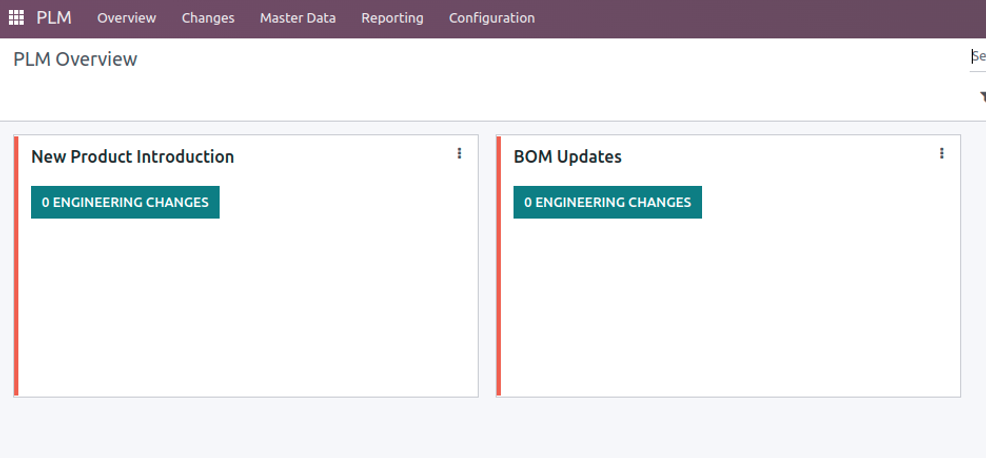
However, you can edit or create new ones according to your needs and check them through PLM Overview.
For each ECO type it is possible to create or edit the stages your ECOs will go through until they are implemented. You can do this using one of the following methods:
- Go into the ECO type and edit directly in Kanban view
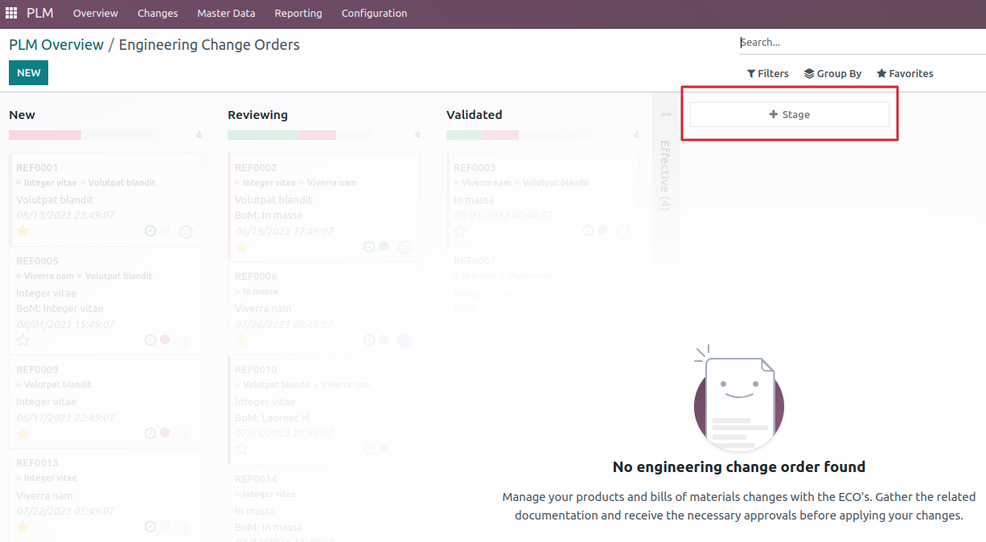
- Navigate to Configuration >> ECO Stages
Within each stage, you can:
- Set approvals
- Enable/disable options
- Change stage descriptions to best suit your business
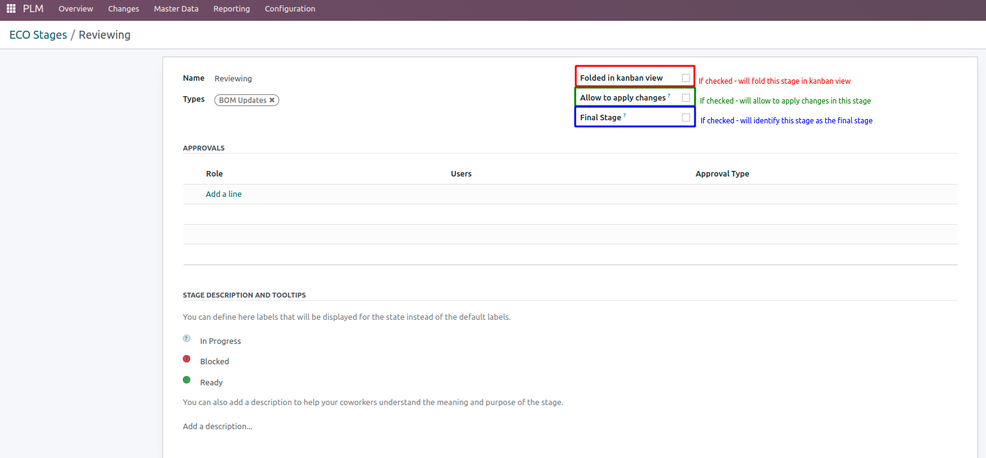
Let’s take a look at how it works inside Odoo by taking a smartphone product with the following BOM as an example.
Practical Example
Smartphone Components
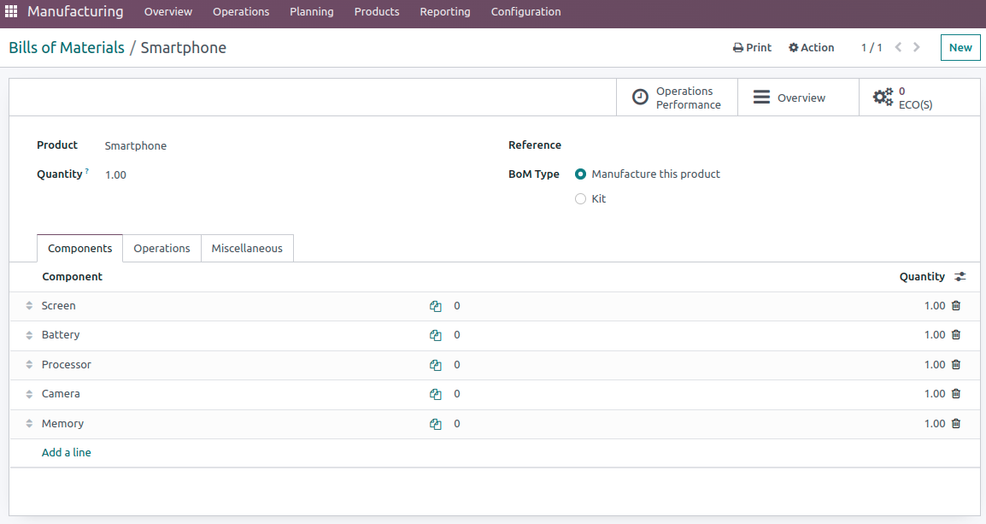
Smartphone Manufacturing Operations
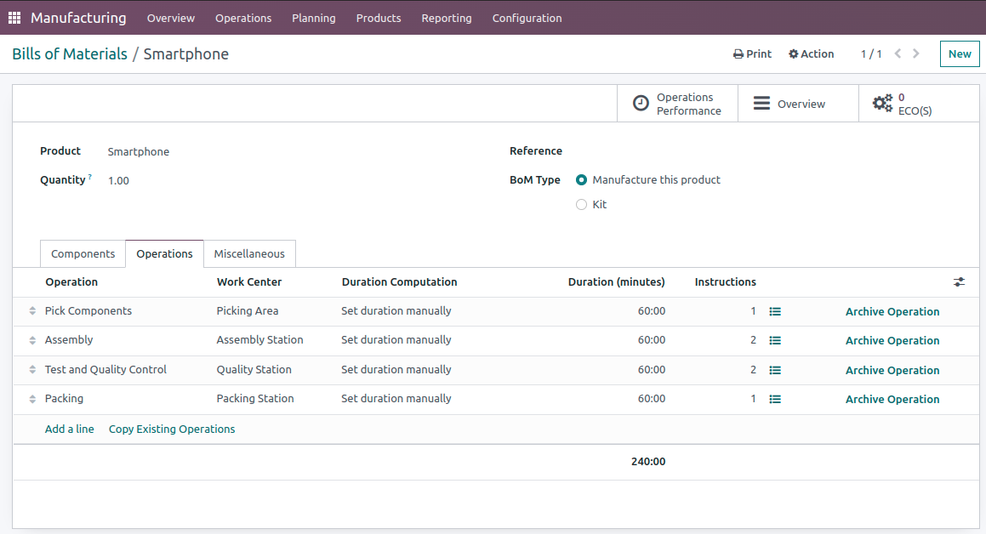
The ECO type used on the example will be the BoM updates and the stages will be:
- New
- Reviewing
- Validated - this has a required approval by the Engineering Team
- Effective
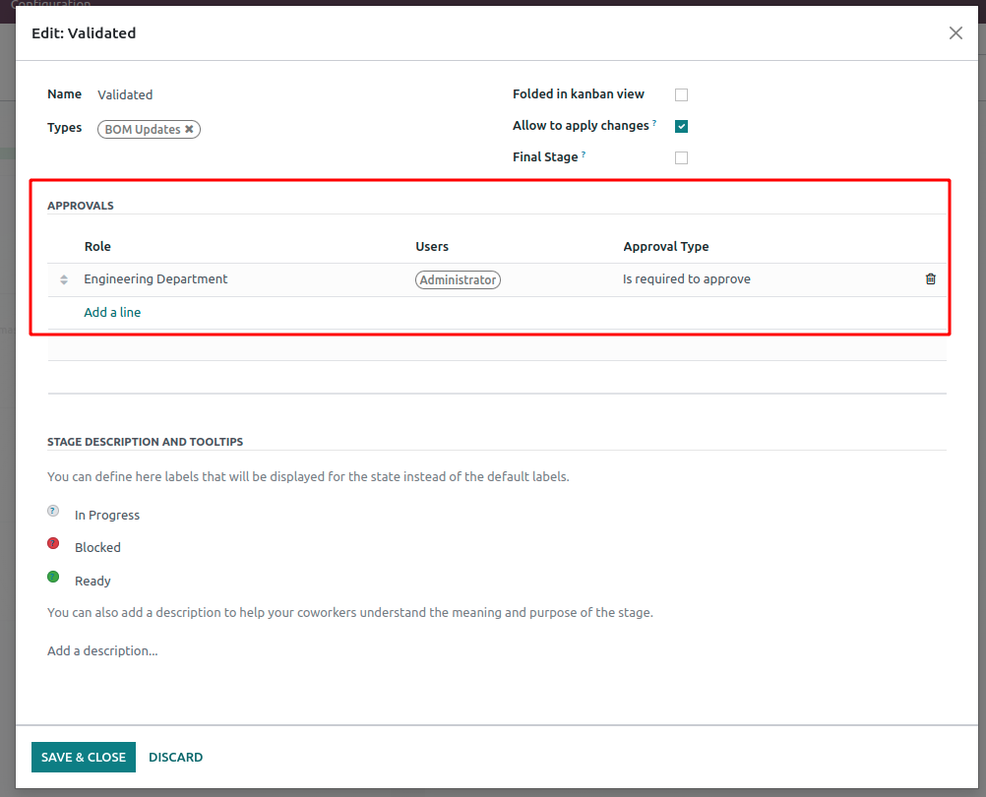
Scenario 1: ECO Created by the Manufacturing Engineering Team
Until the new screen technology was introduced last month, this product information was up to date. Now, the Manufacturing Engineering team would like to replace the old component (Screen) with the latest screen technology release. To manage this change, follow these easy steps:
Step 1: Create New Product
The team starts by creating a new product on the system - the Screen 2.0.
Step 2: Create BoM Update ECO
The second step is to create a BoM Update ECO where it is possible to choose:
- Where to apply the changes
- When to apply
- Who will be responsible If the change to apply is on the bill of materials, it will automatically create one in the archived state. In this one it is possible to replace the component screen with the new screen 2.0.
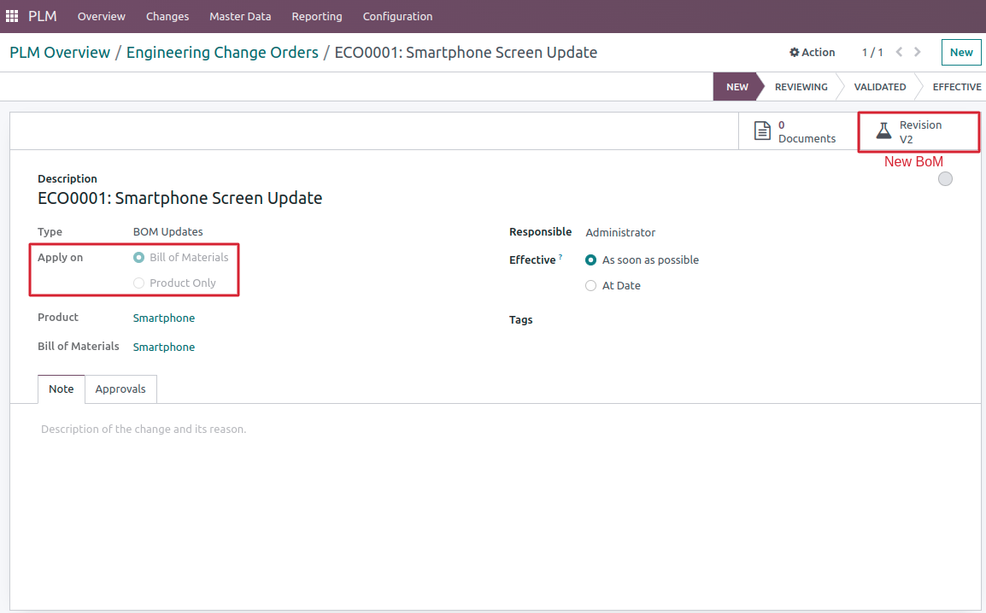
Also, it will display a summary of the applied changes in the ECO BoM Changes tab.
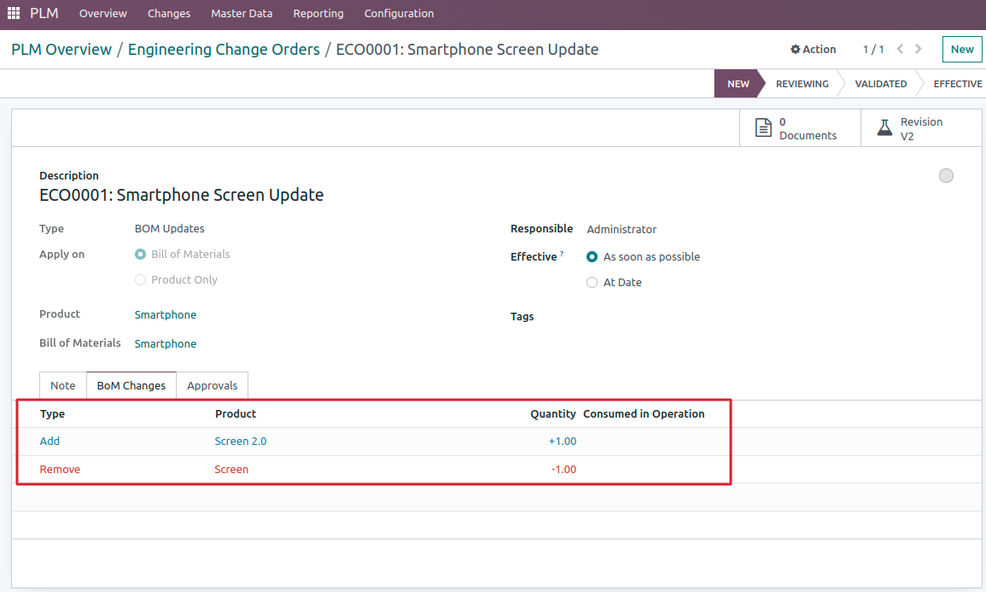
Step 3: Reviewing & Validation
Here, the changes will be reviewed and analyzed. If viability is confirmed, we will then move on to the validation.
The Validated stage is where you can approve or reject the changes. In this case, there is a required approval by the engineering team, and if we try to apply the changes before we get the approval, we will get an error message.
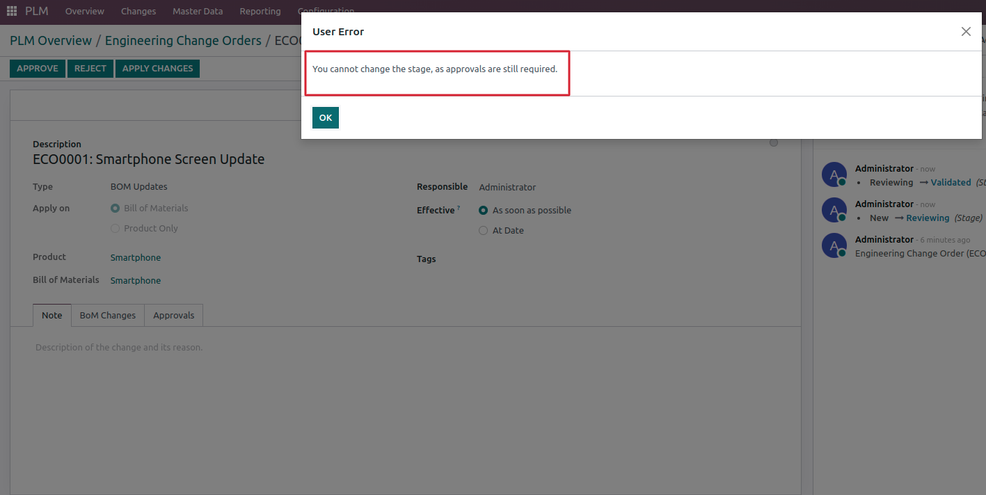
After approval and applying changes, the ECO goes to the Effective stage where the old BoM gets archived and replaced by BoM version 2.
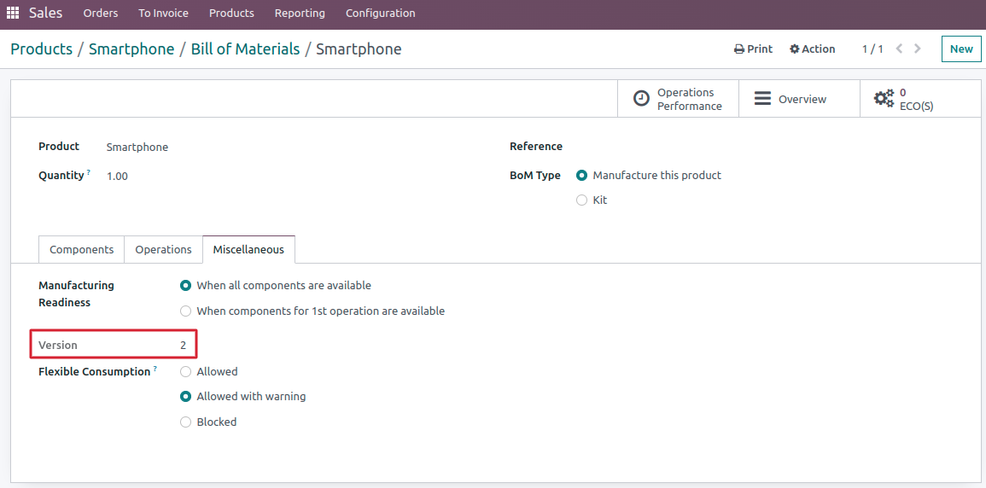
On the product you have a smart button that allows you to check all the ECOs related to it.
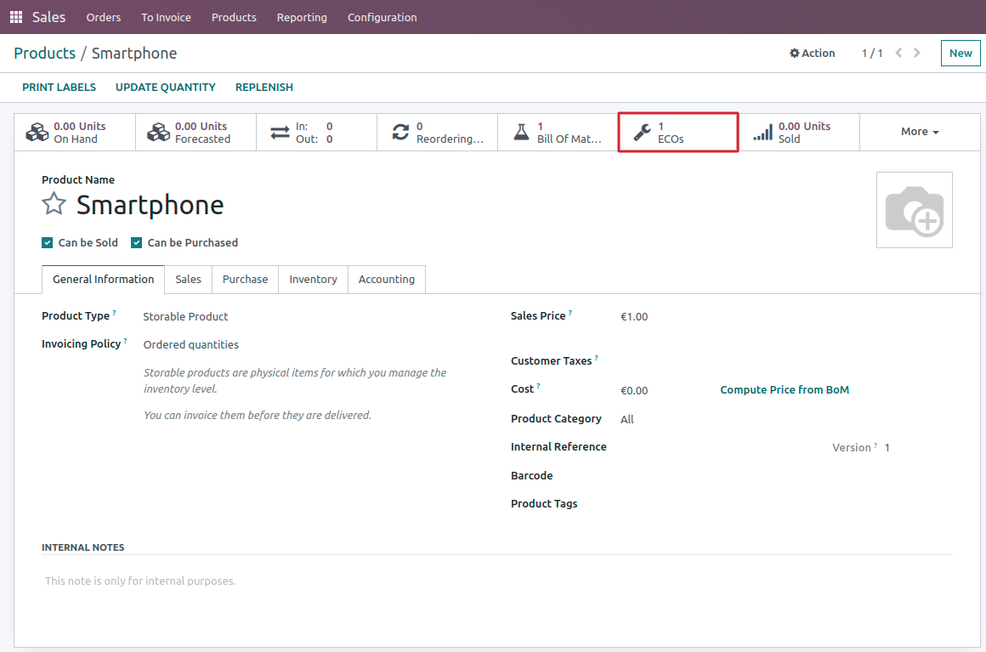
Scenario 2: ECO made by the Fabricator
Apart from the method above, there is an alternative way to create ECOs. With Odoo 16 and its features to help with product lifecycle management, it’s also possible to update instructions, delete/add a step or even set a new picture through the tablet overview while performing the work order. These suggested worksheet improvements will automatically create an ECO on the correct ECO type.
More About Odoo and ERPGAP
By clicking on the burger button it will open a pop up that allows you to suggest a change in the process.
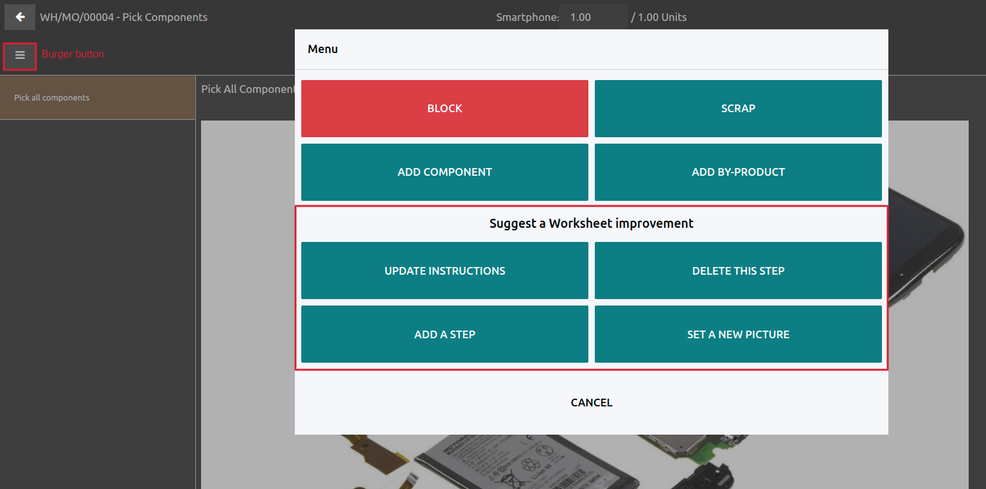
In our example, a fabricator noticed that components were arriving with a lot of defects, so he suggested adding a step after picking the components to inspect them and prove they’re in good condition. All he needs to do is:
- Click on “Add a step”
- Write a title
- Add instructions
- It is also possible to upload a file if needed
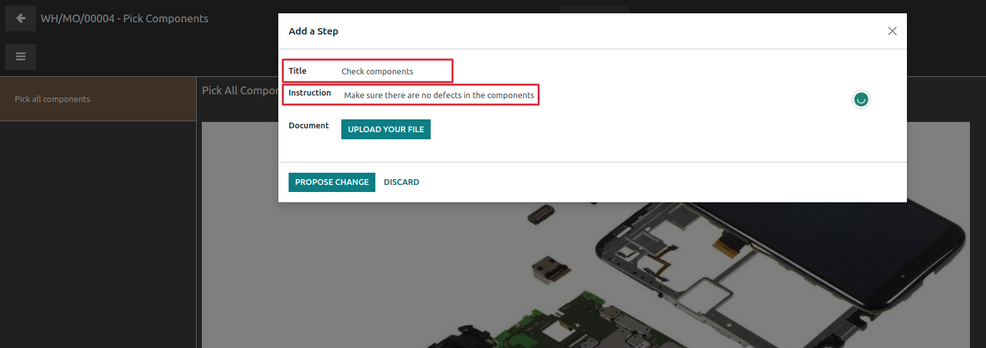
By proposing this change, the system automatically creates an ECO for the Engineering Team to approve the new step in the process.
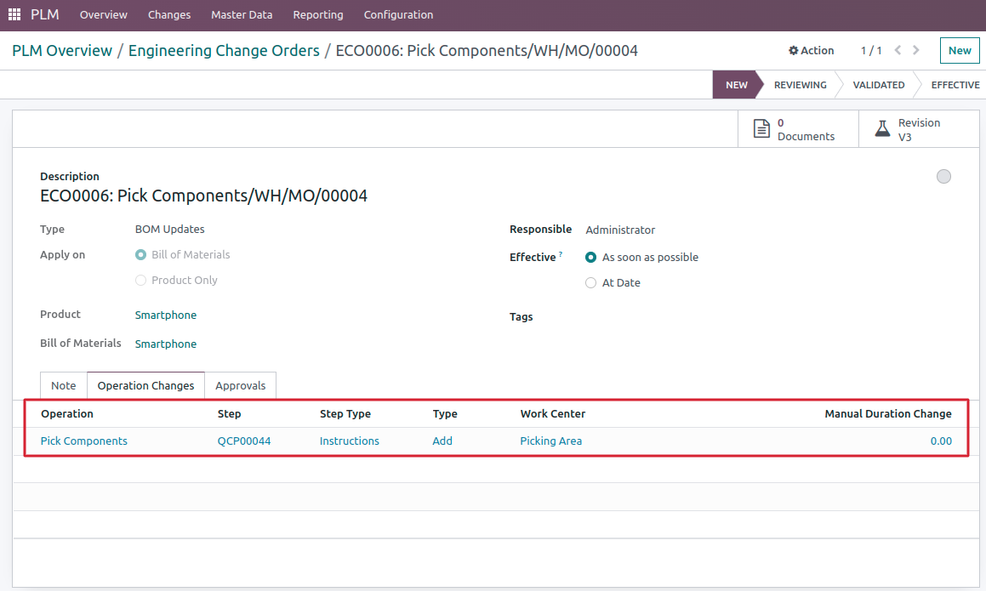
Inside the operation “Pick Components”, you will see the new suggested step “QCP00044”.

The responsible team has the option to analyze this proposal and approve or reject it. When someone approves it, the system will add the step into the operation and update the BoM again.
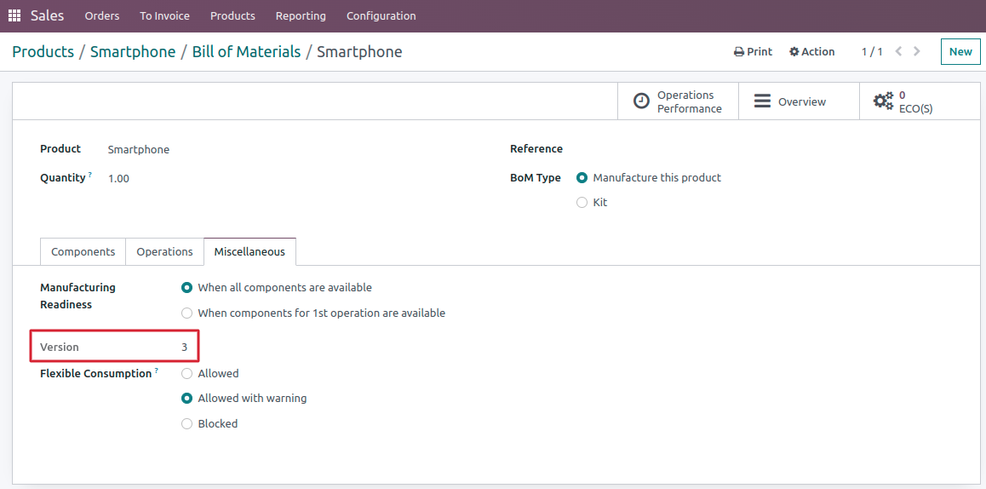
In the product form you will see the registration of all the ECOs related to it.
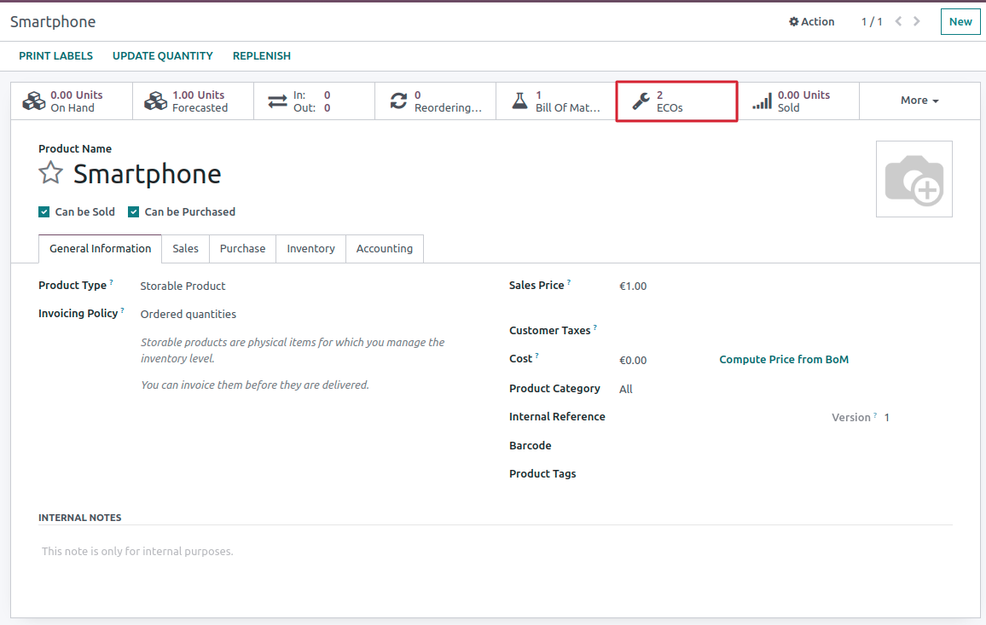
Conclusion
It’s clear that the Odoo PLM module provides a complete and effective solution for easily managing the whole product lifecycle. Odoo PLM enables enterprises to reach new levels of efficiency and collaboration thanks to:
- Centralized data management
- Simplified BOM control
- Seamless connection with design and manufacturing processes
Furthermore, Odoo PLM’s integration capabilities with other Odoo modules facilitate a seamless flow of information throughout the entire product development lifecycle. This integration ensures that changes in the BOM or design will automatically reflect in the manufacturing process, saving time and reducing errors.
Odoo PLM offers a user-friendly and straightforward platform to effectively manage the product lifecycle. Whether it’s handling modification requests, version management, BOM management, team collaboration, or ensuring regulatory compliance, Odoo helps with it all.
Simplified product development is crucial in the cutthroat industry of today. Now, businesses can speed up innovation, boost productivity, and keep on top of trends with the help of Odoo PLM.
Still have doubts?
Start Your Project Now


